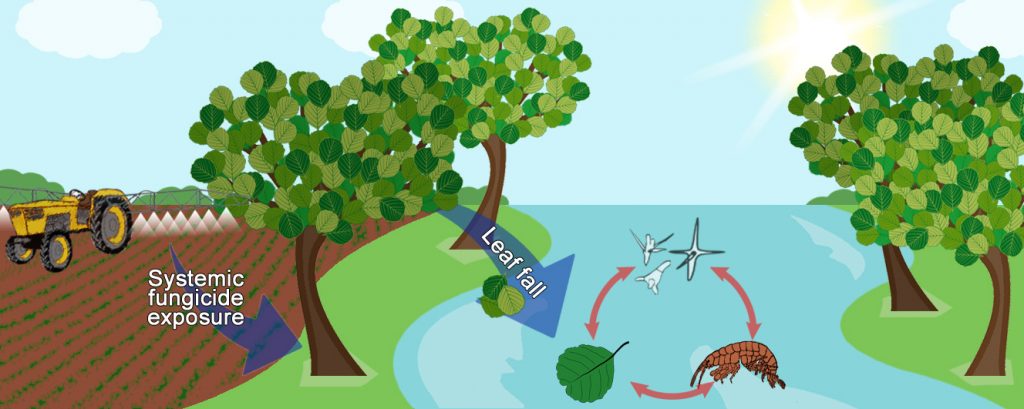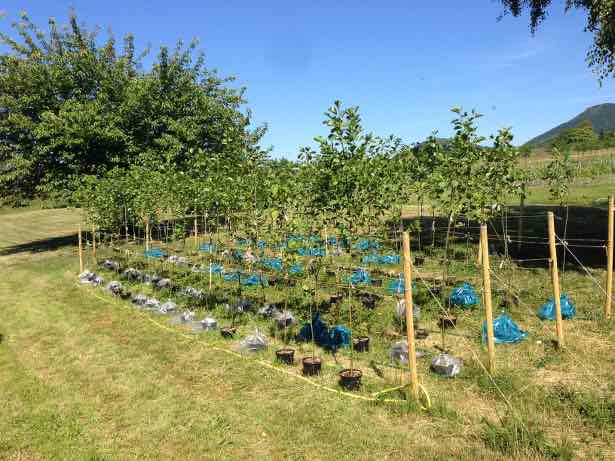In this post, we talk about our recently published paper “The evil within? Systemic fungicide application in trees enhances litter quality for an aquatic decomposer-detritivore system”.
While crops are intentionally treated with fungicides for protection against fungal pests, fungicides are unintentionally introduced into non-target areas such as field margins during and following their application. As a consequence, tree species harboured by these field margins may take up systemic fungicides (i.e., fungicides that can be taken up and translocated within exposed plants), which may result in plant material containing these substances to enter adjacent surface waters during leaf fall. Consequently, microorganisms and shredders may be exposed to systemic fungicides via their diet, while potential effects have yet to be studied.

Trees harboured by field margins may be exposed to systemic fungicides. Consequently, their leaf material shed during autumn may enter streams and affect decomposers and detritivores (taken from publication)
During the present study, we tested if this yet unconsidered exposure pathway would result in similarly detrimental effects in an aquatic decomposer-detritivore system as previously observed for other pathways (e.g., waterborne exposure; see for instance our earlier post Population-level fungicide effects assessed in the Laboratory Stream Microcosm Facility). To this end, we treated black alder trees with a tap water control or a systemic fungicide mixture at two worst-case field application rates. Leaves of these trees were used in an experiment addressing alterations in two functions provided by leaf-associated microorganisms, namely the decomposition and conditioning of leaf material. The latter was addressed via the food-choice response of a leaf-shredding invertebrate, namely Gammarus fossarum. During a second experiment, the consequences of long-term consumption of leaves from trees treated with systemic fungicides on G. fossarum were assessed.

Tree nursery at our field station (photo by J.P. Zubrod)
Systemic fungicide treatment altered the resource quality of alder leaves resulting in trends of increased fungal sporulation and a shift in community composition of leaf-associated fungi. This in turn triggered a preference of Gammarus for microbially conditioned leaves that had received the highest fungicide treatment over control leaves. This higher food quality ultimately caused a higher gammarid growth (up to 300% increase) during the long-term feeding assay. Although the underlying mechanisms still need to be addressed, the present study demonstrates a positive indirect response in aquatic organisms due to systemic pesticide application in a terrestrial system. As our study demonstrates that effects from the introduction of plant material treated with systemic fungicides can strongly differ from those mediated via previously assessed pathways (e.g., waterborne exposure), more research on this “new” exposure pathway seems critical to understand the net effects of fungicides in aquatic detritus-based food webs.
The paper was authored by Kymberly Newton, Jochen Zubrod, Dominic Englert, Simon Lüderwald, Theresa Schell, Patrick Baudy, Marco Konschak, Alexander Feckler, Ralf Schulz, and Mirco Bundschuh and published in Environmental Pollution.
You may also be interested in:
Neonicotinoids falling from trees
About sun, water and toxic leaves…
